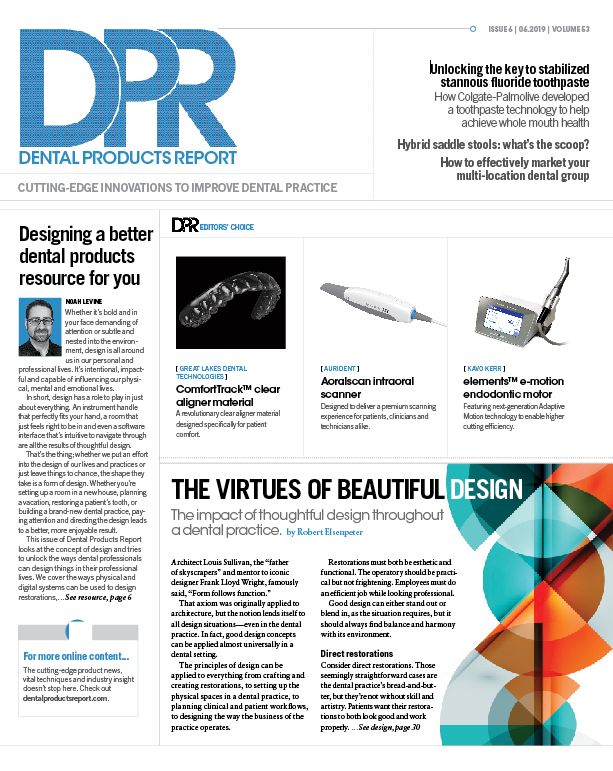How to effectively market your multi-location dental group
Whether your practice has a couple of locations or is a burgeoning DSO, a sound approach to marketing is key to attracting new patients and continuing to grow.

There has been a clear trend over the last decade with more and more practices expanding to multiple locations, incorporating specialty services and scaling up to DSOs. Talk with anyone who has done it or is currently doing it and he or she will tell you it’s difficult and quite messy. But it doesn’t have to be that way.
Admittedly, I have a fairly unique perspective on this subject. My experience as a co-founder running an award-winning dental marketing agency for the last decade has given me a lot of insight into dental marketing processes and data at a macro level. Likewise, as president of The DSO Project, I’ve been able to consult with numerous DSOs across the country and learn from many more. While there are many challenges to scaling from a single location to multiple locations, and up to a DSO, this article will focus on a variety of specific challenges related to marketing.
The marketing process
- I find it easiest to explain the new patient generation process by breaking it down into three primary steps: Market to generate leads
- Convert the leads to appointments
- Convert the appointments into sold dentistry (case acceptance)
This article will discuss the first two steps.
Lead generation should start with a laser focus on digital marketing where the website(s) form the foundation of your online presence. It should go without saying the website(s) should be optimized for mobile devices (ideally using responsive design). Once digital marketing is dialed in and performance baselines are understood, then you can expand to direct-to-consumer (D2C) marketing.
Related reading: Improving practice communication with Patient Prism
Leads can be generated to the website with solid SEO (search engine optimization) and PPC (pay-per-click) campaigns. SEO involves a wide range of activities to get the website(s) ranking highly on Google. PPC campaigns are excellent at generating leads from targeted geographies for specific dental services such as dental implants, orthodontics, cosmetic dentistry and sleep medicine, among others.

Converting leads into appointments
As the leads are generated, converting them into appointments is a critical next step. The main items on a website that help convert traffic into leads are putting the phone number in large font in the top banner, placing a practice overview video on the home page of the website, offering an appointment request button or appointment scheduling service, and using a live chat box to further engage people.
However, items away from your website also play a crucial role in converting leads into appointments. Online reputation and social media make a real difference in convincing potential patients to contact your practice. I always recommend using a software service to generate a steady stream of good reviews to the major review sites, including Google, Facebook and Healthgrades. My firm, WEO Media, offers this type of service, but there are many on the market, so just pick one and use it consistently.
Once the phone rings with your potential new patient on the line, it becomes mission critical to answer all phone calls and convert as many into appointments as possible. As you scale to multiple locations and beyond, I generally recommend using a third-party call center because it offers many advantages, including 24/7 coverage, surge capacity to handle multiple callers at once and, in most cases, a higher scheduling conversion rate is experienced. As your group practice continues to grow, at some point you may want to build your own call center, but I would avoid this as long as possible because it can be quite difficult, and affordable third-party call centers exist.
Regardless of whether you decide to answer calls in your practice or outsource to a third-party, it’s important to really analyze your call answering performance. This will allow you to identify how many calls you’re missing, how well various people are doing at scheduling appointments and what improvements can be made. The best service I’ve seen on the market for call analysis is Patient Prism, an innovative call analysis software that can analyze calls and report in granular detail how things are going and how performance can be improved.
Continue reading on page two...
Tracking the data
As leads are generated, it’s critical to be able to track your lead sources as accurately as possible. I always recommend using phone tracking numbers for your various marketing initiatives. The online presence-which includes your website, along with directories, social media properties and other websites where your practice contact information appears-should all use the same tracking phone number. It’s necessary to use one phone number per location for all online properties about your practice or group. Otherwise, Google will notice the different phone numbers associated with the same business address and your SEO rankings will likely suffer considerably as a result.
PPC campaigns can generally use Google scripts to track phone calls from these paid clicks versus calls related to organic traffic generated from SEO. Likewise, you’ll want to use a separate phone tracking number for each direct mail campaign, each print ad, each radio campaign and every other D2C marketing medium you employ, so you can effectively measure (or at least estimate) campaign ROI.
At the end of the day, probably the most important aspect of tracking where new patients come from is simply asking them when they come to your office. It’s critical your staff have 100 percent compliance on this activity. You should treat this as a key job function for them and review it on a weekly or monthly basis. Accurate data is key to optimizing any marketing program.
Branding and scaling considerations
As you scale to multiple locations, you have two options with websites
- Build one website with location pages for each location, or
- Build a separate website for each location.
If you choose to have one website, there’s a benefit to the simplicity of being able to reference one website address for all your marketing efforts. In this case, you should create separate webpages within the main website for each location because this is helpful for SEO rankings.
However, if you’re concerned with generating the best results from your online marketing, then you should have one website for each practice location because this is far better for SEO performance. The good news is you can still have a central landing page or microsite to use a single website address for mass marketing activities such as a TV ad that sends people to one website address. In this case the landing page or microsite would simply contain links to all of the individual practice level websites.
Related reading: 6 steps to make any dental practice shine online
Direct-to-consumer marketing
Once you have enough locations in a geographic area, direct-to-consumer (D2C) marketing can be quite effective. As stated above, you’ll want to drive leads to one website address and track calls and leads as best you can.
The most popular-and probably most effective-form of D2C marketing is direct mail campaigns. Radio ads on AM talk radio can also be quite effective. TV ads are more expensive and more unpredictable but can work well in some cases. Due to their higher costs, these types of marketing strategies make the most sense when your group practice is ready to move beyond the highly targeted approach of online marketing to cast the wider net to reach the entire community served by your practice’s multiple locations.
With your group practice’s online presence well organized and working to generate new patient leads, and your team properly trained to convert those leads into appointments, your group practice will have a solid marketing foundation on which to build. That’s when it’s time to push beyond SEO and PPC to take your messaging D2C.
Conclusion
While this article is aimed at helping growing group practices and DSOs make their marketing efforts as effective as possible, the same principles apply to practices of all sizes. Regardless of the number of locations that make up a particular practice, having a solid SEO strategy, making sure your practice contact information is consistent everywhere online, and training your staff to covert new patients over the phone are key parts of growing a dental practice.
